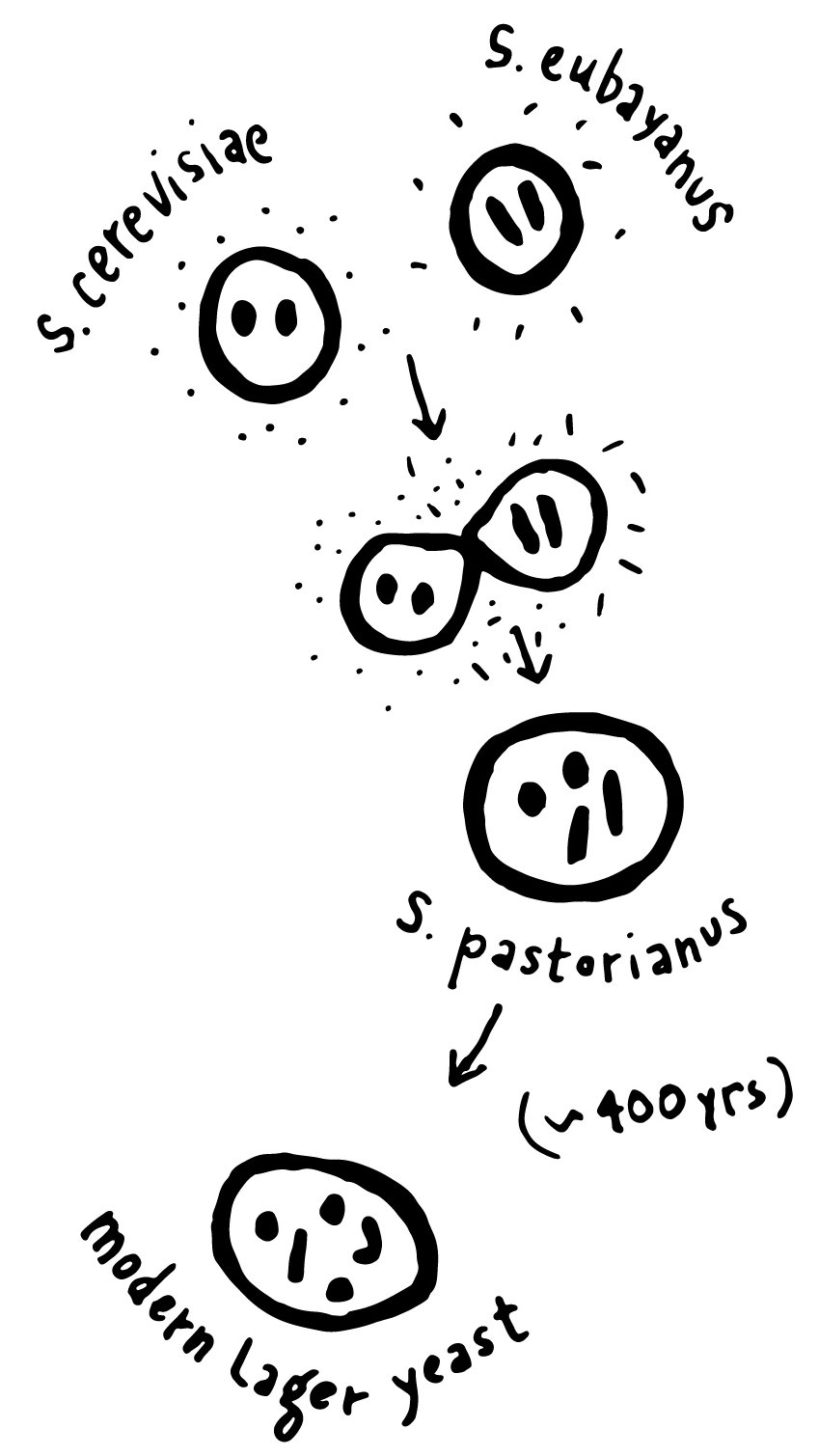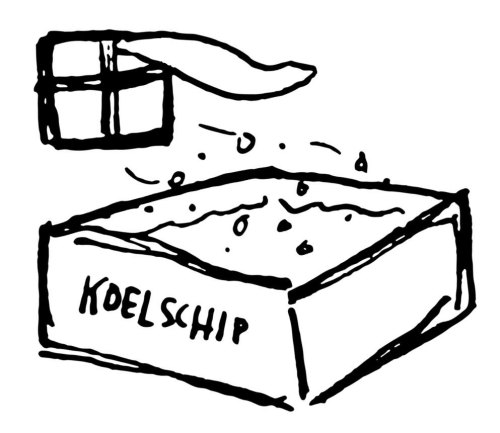How many beer styles are there? Well, the Beer Judge Certification Program (BJCP), which is widely considered to be the authority on beer style guidelines, lists around 114 subcategories for beer styles. To a neophyte craft beer enthusiast, this may seem like a lot to learn, but to any one of the 4000+ breweries in this country, such a small number of styles means that any single beer style can be expected to exist in a mind-boggling number of iterations. To give an example, a search for “IPA” on Beer Advocate gives nearly 16,000 results. Even searching for one of the more esoteric styles, “sahti” yields 20 commercial examples. If the thousands of craft breweries want to try something new, we’ll have to be very creative.
Certainly, chemically reconstructing ancient recipes from archaeological sites is one option–and an exciting way to reintroduce beers that were previously lost to history. Of course, this process is limited to what has already been done in human history and regardless, could never keep pace with the current rapid growth in breweries and beer demand. The recent increase in overall market share of craft beer indicates that the American public has, on average, become more discerning and sophisticated in its beer consumption. Increasingly, folks at bars are demanding new beers. They want something they haven’t tried before.
Obviously, there are many beers that cannot be narrowly defined by traditional style guidelines and indeed, these are some of the most exciting beers out there right now. However, given the composition of beer, we find only a few dimensions over which to vary our recipes. Hops have been a popular choice, giving way to the myriad IPA recipes mentioned above. In turn, several new hop varieties are being bred and added to our lexicon each year. Malted grain is another avenue of exploration, and the recent explosion of “ancient grains” as well as enthusiasm surrounding heritage grains provides us further means of expanding our craft brewing color palette. If that doesn’t excite you, there are numerous breakfast cereals that can be made into beer. Although water chemistry is another possible variable, brewing water itself has not yet ignited a fervid passion among beer drinkers (with some notable exceptions). That said, varying water chemistry is a more subtle way to explore flavor profiles. For those who disdain subtlety, there is always the option of adjunct ingredients–adding something beyond the holy Four. This has also been done extensively, with ingredients that run the gamut from hot chili peppers to lobster. So what’s left?
Disciples of the Reinheitsgebot (at least the  modern version), will note that I haven’t mentioned yeast yet. Well, that’s what I’ve been leading up to, I suppose. Those who claim to know their beer will often divide known beers into two categories: ales and lagers. The distinction relates to genetic differences between the yeasts that are used to ferment these beers. Ales are the product of fermentation by Saccharomyces cerevisiae, whereas lagers are fermented by S. pastorianus, now widely considered to be a hybrid product of fusion that occurred between S. cerevisiae and S. eubayanus, perhaps in the 15th century. Lagers are thus the half-sisters of ales. Until fairly recently, this was pretty much it in terms of brewer’s yeast biodiversity. Some breweries have begun carrying out primary fermentations with strains of Brettanomyces, a genus typically associated with contamination or secondary fermentation of sour beers. The use of new species in beer fermentation has opened doors to a world of new flavors.
modern version), will note that I haven’t mentioned yeast yet. Well, that’s what I’ve been leading up to, I suppose. Those who claim to know their beer will often divide known beers into two categories: ales and lagers. The distinction relates to genetic differences between the yeasts that are used to ferment these beers. Ales are the product of fermentation by Saccharomyces cerevisiae, whereas lagers are fermented by S. pastorianus, now widely considered to be a hybrid product of fusion that occurred between S. cerevisiae and S. eubayanus, perhaps in the 15th century. Lagers are thus the half-sisters of ales. Until fairly recently, this was pretty much it in terms of brewer’s yeast biodiversity. Some breweries have begun carrying out primary fermentations with strains of Brettanomyces, a genus typically associated with contamination or secondary fermentation of sour beers. The use of new species in beer fermentation has opened doors to a world of new flavors.
In traditional lambics and Flanders reds, fermentation is carried out spontaneously. This means there is likely a large population of microorganisms that work in concert to ferment these beers. This population is undefined and can vary substantially from batch to batch. Because this is largely controlled by what organisms happen to inhabit the brewery (walls, ceilings, dust), it is unpredictable and difficult to tease apart. Some work has been done to study the ecological succession in these wild ales, but thoroughly controlling flavor in each batch is still a difficult task. When we look at the actual  organisms present in some American wild beers, we see not only S. cerevisiae, but members of Pichia, Candida, Dekkera (Brettanomyces), as well as lactic acid bacteria, Leuconostoc spp. and Streptococci. Whoa. So who’s doing what? And how do we replicate it reproducibly? What other species can make beer? What unknown flavors are hiding out there right before our eyes? Also, whence can we harvest even more flavors and aromas?
organisms present in some American wild beers, we see not only S. cerevisiae, but members of Pichia, Candida, Dekkera (Brettanomyces), as well as lactic acid bacteria, Leuconostoc spp. and Streptococci. Whoa. So who’s doing what? And how do we replicate it reproducibly? What other species can make beer? What unknown flavors are hiding out there right before our eyes? Also, whence can we harvest even more flavors and aromas?
Perhaps, rather than thinking along species lines, we can think about tastes and aromas themselves. Flavors produced during fermentation are metabolic byproducts, often in rather low concentrations. Because the taste thresholds for these are also low, we detect them easily and note the flavors. One such example is 4-vinylguaiacol–a compound that can be detected in beer at concentrations as low as 200 parts per billion and gives hefeweizens their notable clove-like flavor. This is produced only by specific yeast strains that have the so-called POF gene. This gene codes for an enzyme that can convert ferulic acid, found in malt, into 4-vinylguaiacol. The example of the POF gene is a particularly interesting one, because it shows us not only the connection between genetics and beer flavor, but the complex relationship between flavor, context and perception. If you were wondering what “POF” stood for, the gene was named for “phenolic off-flavor”. That’s because in the wrong context, a clove flavor is considered a beer defect or off-flavor. But in the context of a hefeweizen, it is not only acceptable, it is required (see BJCP guidelines, above).
One can imagine how and why the phenolic flavors imparted by certain Brettanomyces strains, often described as “band-aid”, “barnyard”, “smoky” or “mousey”, could be construed as defects. For these reasons, brewers have historically done all they could to keep this species away from their beer. But given the right context, the aroma of a horse blanket could provide a welcomed complexity to an otherwise “clean-tasting” (read: boring) beer. Aromas, given their connection to the reptilian brain, are strong evokers of memory. So instead of that beer being a simple thirst-slaker, perhaps a more interesting choice of yeast would trigger vivid memories of those halcyon caballero days, lazily trotting around the ranch on your increasingly sweaty horse in the hot New Mexican sun. Or, that time you had a hay ride at your niece’s birthday party. Either way, there is a complexity here that elevates the drinking experience to something more than a drinking experience, and it’s all due to some nano-sized molecular differences among micro-sized organisms.

Getting back to the role of context, there are certainly some beer recipes that are well suited for the phenolic flavors, yet even these require a suitable cultural context. The growth of the craft beer movement in the US has led to greater interest in complex beer flavors. It is this gradual enlightenment of the beer-drinking community that has enabled a wider acceptance of beers with unusual flavors, thereby giving the economic impetus and support to brewers who pursue these avenues of creativity. It is this pattern that has led to the proliferation of göses, American wild ales and yes, sahtis.
Here, I am actually understating the role of the drinking community, since it is the drinkers’ demands that determine which brewers succeed and fail. Given the increasing demand for new beers, craft brewers not only have a newfound ability to experiment with nontraditional flavors and organisms, they should feel an imperative to do so. This brings us back to the discussion of how to push the boundaries of new beer flavors. At Aeronaut, we built a laboratory that allows us to isolate and examine new species of yeast (and what the hell, bacteria too). We can not only capture never-before-brewed-with strains, but we can characterize them and identify them in-house. Yeast are everywhere, and every one of them is filled with numerous genes that produce flavors and aromas. Because these flavor-active compounds are all produced in different amounts and ratios, we cannot yet predict how each of these organisms will fare at making beer, nor can we anticipate what strange new flavors we will find (or, for that matter, their public acceptance). Our thesis is that these strains, purified and well characterized (and perhaps selectively bred), will create not only a rich variety of new beer flavors but will behave in a reproducible manner. In this way, we will contribute completely novel beers to the craft brewing world.
So, we have set out on a journey to collect these strains and begin taming them for brewing purposes. More on our first results in a follow-up post…
-Ronn Friedlander
Thanks to Becka Schuelke for the awesome sketches!

